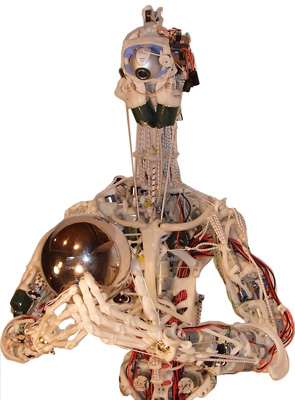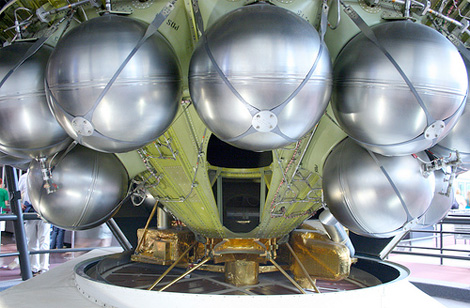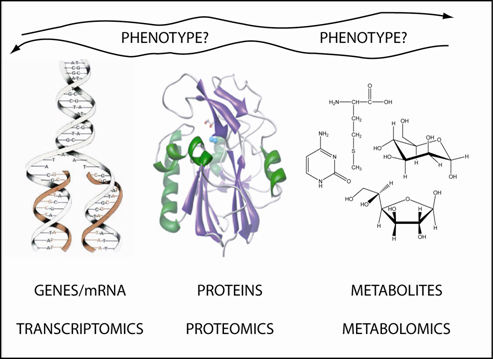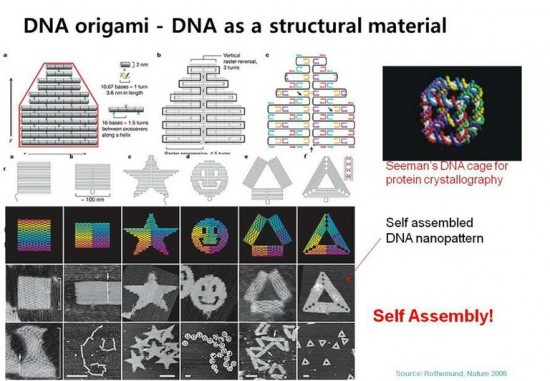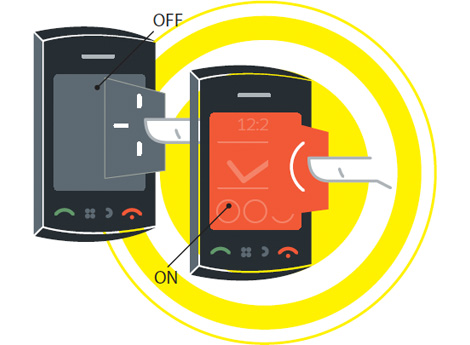From DNA origami to osseointegration, here are the big ideas that took giant leaps this year 2010. Get to know them now, before you touch a piezoelectric display or buy your first ultracapacitor.
1. Anthropomimetic Machines
No matter how closely a robot resembles a human on the outside, if you crack it open, the jumble of wires is unlikely to bear much resemblance to our insides. A group of European researchers aims to bridge that gap–its robot prototype is anthropomimetic, meaning it mimics the human form. There’s a skeleton made of thermoplastic polymer, actuators that correspond to each muscle and kiteline as tendons. The goal is to create a more human-like robot that interacts with and responds to environments the way we do.
[youtube]http://www.youtube.com/watch?v=cI9H4FoA0b4[/youtube]
2. Direct Carbon Fuel Cell
Yesterday’s fuel cells, like those seen here on Spacelab, require a hydrogen infrastructure. (Photograph by H4NUM4N)
Coal is dirty, and fuel cells run on hydrogen–that’s the conventional wisdom. But a new generation of “direct carbon” fuel cells challenges that. Instead of relying on hard-to-produce hydrogen, these cells pull their power from an electrochemical reaction between oxygen and pulverized coal (or some other source of carbon, like biomass). The advantage: carbon-based energy production that requires no combustion, allowing it to operate at about twice the efficiency of a typical coal-fired power plant. California-based Direct Carbon Technology expects to have a 10-kilowatt prototype running on biomass in 2010, while Ohio-based Contained Energy hopes soon to use the tech to power a small light bulb. Eventually, the companies hope to build modular fuel cells that can be stacked in order to create new small-scale power plants or add clean capacity to existing plants.
[youtube]http://www.youtube.com/watch?v=8rofx6Gaz40[/youtube]
3. Metabolomics
For the past five years, scientists at the University of Alberta in Edmonton have been working on the Human Metabolome Project, a database of the 8000 naturally occurring metabolites (that is, small molecules involved in chemical reactions in the body), as well as 1450 drugs, 1900 food additives and 2900 toxins that turn up in blood and urine tests. With this information, researchers can analyze a patient’s metabolomic profile, allowing them to tell from a drop of blood or urine whether somebody likes chocolate–or is likely to develop a life-threatening disease. Today, these tests require million-dollar pieces of equipment that are mostly confined to research labs. The Project’s database, which was first released in 2007, is already being used in commercial applications such as drug discovery and disease diagnosis, making quick and easy tests for personalized health and medical guidance possible.
[youtube]http://www.youtube.com/watch?v=Lpj5YmscOZE[/youtube]
4. DNA Origami
Scientists at Caltech have been folding microscopic strands of DNA into interesting shapes for the past few years. A cool party trick for sure, until a breakthrough last summer suggested that the folded strands could be used to create ultrasmall computer chips. That’s when the scientists teamed up with IBM researchers and showed that they could strategically position folded DNA shapes, such as triangles, along the sort of silicon wafer used in microchips. This should allow them to use pieces of the DNA strands as anchor points for tiny computer-chip components that could be built as little as 6 nanometers apart–a huge improvement over the current standard of 45 nm.
[youtube]http://www.youtube.com/watch?v=31q4ze2fWA4[/youtube]
5. Piezoelectric Display
(Illustration by Leandro Castelao)
Scientists have long known about naturally occurring piezoelectric materials, which have the ability to transform electrical energy into physical stress and vice versa. But by building the property into electronic displays, companies can now create screens that can change shape or texture. This year, the technology is expected to make the leap into mainstream consumer products, offering the potential for mobile devices with screens that can harden protectively when turned off, and soften into a depressible touchscreen when turned on.


